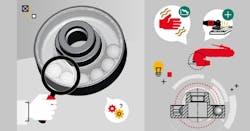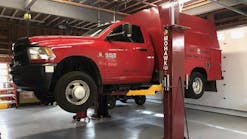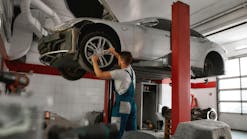Power tools are a key to productivity in the oil & gas or the metal working industry. Maintenance and production tasks must be carried out efficiently, however intensive use of vibrating power tools, such as grinders, can expose operators to Hand Arm Vibration Syndrome (HAVS). How can we reduce risks, improve productivity and reduce the abrasive costs at the same time?
In order to prevent workers from experiencing HAVS and to prioritize best practice, you should consider tools with an autobalancer. This will help to reduce vibration levels and operators’ fatigue, thereby ensuring users’ safety while improving productivity and profitability ratios. Additionally, the extra cost of the autobalancer is quickly compensated by the decreased abrasive consumption and the increased productivity.
“Always remember the easy steps that can be taken to reduce the risk of HAVS: choose a strong tool with short trigger time that is right for the job, keep hands warm, take breaks on a regular basis and alternate between stressful and less stressful tasks and grip positions," Harald Odenman, Chicago Pneumatic's product marketing manager, said.
What is an autobalancer?
Quite simply, an autobalancer stabilizes a tool. An autobalancer is a disk, such as ball bearing, with freely moving balls inside that is fixed onto the output of the tool as a flange, and spins at the same speed as the tool’s output. While spinning, the balls compensate for any abrasive imperfection. Their fast rotation creates a gyroscopic effect that balances the tool, greatly reducing any vibration.
An autobalancer is considered as one of the best anti-vibration options for power tools, not only because ergonomics are improved but also because operators’ fatigue is reduced and consequently the risk of injury decreases. Moreover, users can work with these tools for longer as they reach their maximum limit of vibration later than when they work with tools that do not include this feature.
By choosing a tool with an autobalancer there are many benefits:
- Increased efficiency, profitability and productivity
- Tools’ lifetime is enhanced as they have shorter trigger times
- Abrasive disks last longer because the contact between the abrasive and the application is optimized. This increases the material removal rate up to 15 percent more than using a tool without an autobalancer.
What is the effect on productivity when vibrations are reduced?
Let’s look at an example and compare the CP3650 grinder (without an autobalancer) against the CP3650-120AB5VK grinder (with an autobalancer). The autobalancer reduces vibrations from 7.5 m/s² to 4.5 m/s², and since the time of use is proportional to the square of the vibration value, this has a strong effect on how long you can grind safely.
The grinder with an autobalancer can be used for 2 hours 28 minutes before taking adjustments to improve the workstation in order to comply with the directive EU 2002/44/EC, and almost 10 hours before reaching the point when users need to stop using the tool for the day. This means operators can grind for three times longer than when using a tool without an autobalancer.
“In addition to using a tool with an autobalancer to limit vibrations, operators should consider tools with anti-vibration side handles, wear vibration-reducing gloves and work will well-maintained tools," Odenman said.
This information was provided by Chicago Pneumatic.


